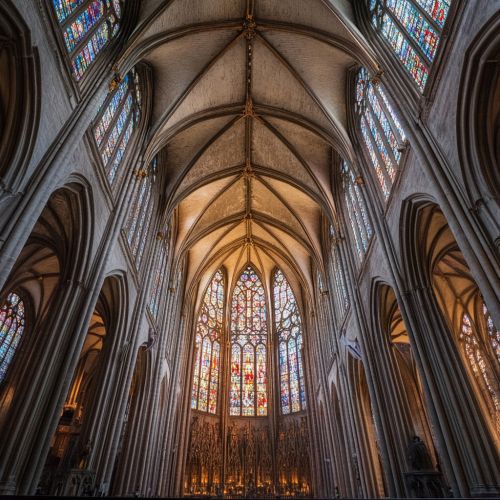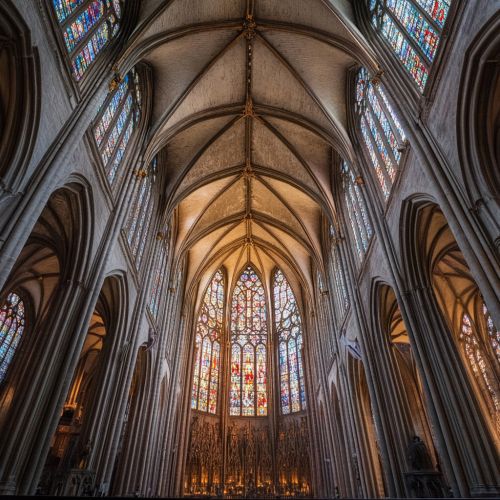Roman Catholic Diocese of 's-Hertogenbosch
History
The Roman Catholic Diocese of 's-Hertogenbosch is one of the oldest dioceses in the Netherlands, with its origins tracing back to the early Middle Ages. The diocese was officially established in 1559 as part of the ecclesiastical restructuring initiated by Pope Paul IV. This restructuring aimed to better organize the Church's administrative divisions in response to the Protestant Reformation. The diocese's seat is located in the city of 's-Hertogenbosch, also known as Den Bosch, which has been a significant religious and cultural center for centuries.
The diocese has undergone several changes throughout its history, particularly during the Eighty Years' War (1568-1648), which saw the region oscillate between Catholic and Protestant control. The Peace of Westphalia in 1648, which ended the war, resulted in the diocese being suppressed and its properties confiscated by the Protestant Dutch Republic. However, the diocese was re-established in 1853 following the restoration of the Catholic hierarchy in the Netherlands.
Geographic Jurisdiction
The Diocese of 's-Hertogenbosch covers a significant portion of the southern Netherlands, specifically the province of North Brabant. It is bordered by the Diocese of Breda to the west, the Diocese of Roermond to the south, and the Archdiocese of Utrecht to the north. The diocese's territory is predominantly rural, with several urban centers, including 's-Hertogenbosch, Eindhoven, and Tilburg.
Ecclesiastical Structure
The diocese is divided into several deaneries, each comprising multiple parishes. These deaneries serve as intermediate administrative units that facilitate communication and coordination between the diocesan bishop and the individual parishes. The current bishop of the Diocese of 's-Hertogenbosch is Bishop Gerard de Korte, who was appointed in 2016.
The diocesan curia, located in 's-Hertogenbosch, is responsible for the administration of the diocese. It includes various offices and departments, such as the chancery, the office of the vicar general, and the tribunal. The curia oversees matters related to clergy, religious education, liturgy, and pastoral care.
Cathedral and Major Churches
The St. John's Cathedral in 's-Hertogenbosch serves as the mother church of the diocese. This Gothic-style cathedral, known for its intricate architecture and stunning stained glass windows, is a significant landmark and a center of Catholic worship in the region. The cathedral has undergone several renovations and restorations over the centuries, preserving its historical and architectural significance.
Other notable churches in the diocese include the Basilica of St. Willibrord in Eindhoven, the Church of St. Lambert in Helmond, and the Basilica of Our Lady of the Sacred Heart in Tilburg. These churches play crucial roles in the spiritual and community life of their respective areas.


Religious Orders and Institutions
The Diocese of 's-Hertogenbosch is home to several religious orders and congregations that contribute to its spiritual and social mission. These include the Jesuits, the Franciscans, the Carmelites, and the Sisters of Charity of St. Charles Borromeo. These orders operate various institutions, such as schools, hospitals, and retreat centers, providing essential services to the community.
One notable institution is the Radboud University Medical Center in Nijmegen, which, although located outside the diocese's territorial boundaries, has historical ties to the Catholic Church in the Netherlands. The medical center is renowned for its research and healthcare services.
Education and Formation
The diocese places a strong emphasis on religious education and the formation of clergy and laypeople. The diocesan seminary, St. John's Seminary, located in 's-Hertogenbosch, provides comprehensive training for future priests. The seminary offers programs in philosophy, theology, and pastoral ministry, preparing candidates for ordination and service in the diocese.
In addition to the seminary, the diocese operates several Catholic schools and educational institutions that offer primary, secondary, and higher education. These schools aim to provide a holistic education that integrates academic excellence with spiritual and moral development.
Social and Pastoral Activities
The Diocese of 's-Hertogenbosch is actively involved in various social and pastoral activities that address the needs of its community. The diocesan Caritas organization coordinates efforts to assist the poor, the marginalized, and the vulnerable. This includes providing food, shelter, and other forms of support to those in need.
The diocese also promotes pastoral care through its various ministries, such as youth ministry, family ministry, and healthcare ministry. These ministries aim to support individuals and families in their spiritual and personal growth, offering guidance, counseling, and sacramental services.
Cultural and Historical Significance
The Diocese of 's-Hertogenbosch has a rich cultural and historical heritage that reflects its long-standing presence in the region. The diocese's churches, monasteries, and other religious buildings are important cultural landmarks that attract visitors and pilgrims. These sites often host religious festivals, concerts, and other cultural events that celebrate the diocese's heritage.
The diocese also plays a role in preserving and promoting the region's religious art and artifacts. The diocesan museum, located in 's-Hertogenbosch, houses a collection of religious art, manuscripts, and liturgical objects that offer insights into the diocese's history and traditions.
Challenges and Future Directions
Like many dioceses worldwide, the Diocese of 's-Hertogenbosch faces several challenges, including declining church attendance, a shortage of clergy, and the need to address contemporary social issues. The diocese is actively working to address these challenges through various initiatives, such as promoting vocations, enhancing lay participation, and engaging with the broader community.
The diocese is also exploring new ways to evangelize and reach out to people in an increasingly secular society. This includes utilizing modern communication tools and social media to share the message of the Gospel and connect with individuals who may not regularly attend church.
